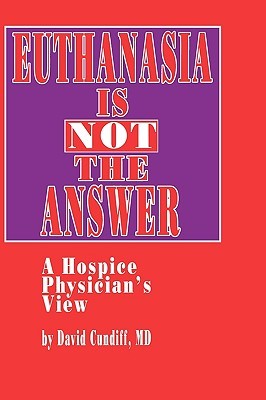
- We will send in 10–14 business days.
- Author: David Cundiff
- Publisher: Humana
- ISBN-10: 089603237X
- ISBN-13: 9780896032378
- Format: 16.3 x 23.6 x 1.9 cm, kieti viršeliai
- Language: English
- SAVE -10% with code: EXTRA
Reviews
Description
Instances of euthanasia or mercy killing date back to antiquity. However, it is only recently that the unprecedented grassroots efforts to legalize euthana- sia have begun building. "Terminal Illness, Assistance with Dying," a California ballot initiative for the No- vember 1992 election, might for the first time in modem history legalize euthanasia and assisted suicide by physicians. Similar initiatives are planned in other states. To vote intelligently, citizens in California and throughout the United States need to learn who is likely to request euthanasia or assisted suicide, and why. How we care for the terminally ill eventually af- fects us all. In over half of all deaths, a chronic dis- ease process such as cancer or congestive heart failure leads to a terminal phase that may last for days, weeks, or months. Most people are more afraid of the suffering associated with this terminal phase than they are afraid of dying itself. When polled, most Americans tell us they would prefer to die at home, surrounded by loved ones, rather than in a hospital receiving high-tech tests and treatments until the last. Yet the majority of people, even those with term- inal illnesses, die in the hospital. What factors in our culture and health care system have led to this dichotomy? Unrelieved suffering is also the primary reason for euthanasia requests.
EXTRA 10 % discount with code: EXTRA
The promotion ends in 21d.07:12:53
The discount code is valid when purchasing from 10 €. Discounts do not stack.
- Author: David Cundiff
- Publisher: Humana
- ISBN-10: 089603237X
- ISBN-13: 9780896032378
- Format: 16.3 x 23.6 x 1.9 cm, kieti viršeliai
- Language: English English
Instances of euthanasia or mercy killing date back to antiquity. However, it is only recently that the unprecedented grassroots efforts to legalize euthana- sia have begun building. "Terminal Illness, Assistance with Dying," a California ballot initiative for the No- vember 1992 election, might for the first time in modem history legalize euthanasia and assisted suicide by physicians. Similar initiatives are planned in other states. To vote intelligently, citizens in California and throughout the United States need to learn who is likely to request euthanasia or assisted suicide, and why. How we care for the terminally ill eventually af- fects us all. In over half of all deaths, a chronic dis- ease process such as cancer or congestive heart failure leads to a terminal phase that may last for days, weeks, or months. Most people are more afraid of the suffering associated with this terminal phase than they are afraid of dying itself. When polled, most Americans tell us they would prefer to die at home, surrounded by loved ones, rather than in a hospital receiving high-tech tests and treatments until the last. Yet the majority of people, even those with term- inal illnesses, die in the hospital. What factors in our culture and health care system have led to this dichotomy? Unrelieved suffering is also the primary reason for euthanasia requests.


Reviews